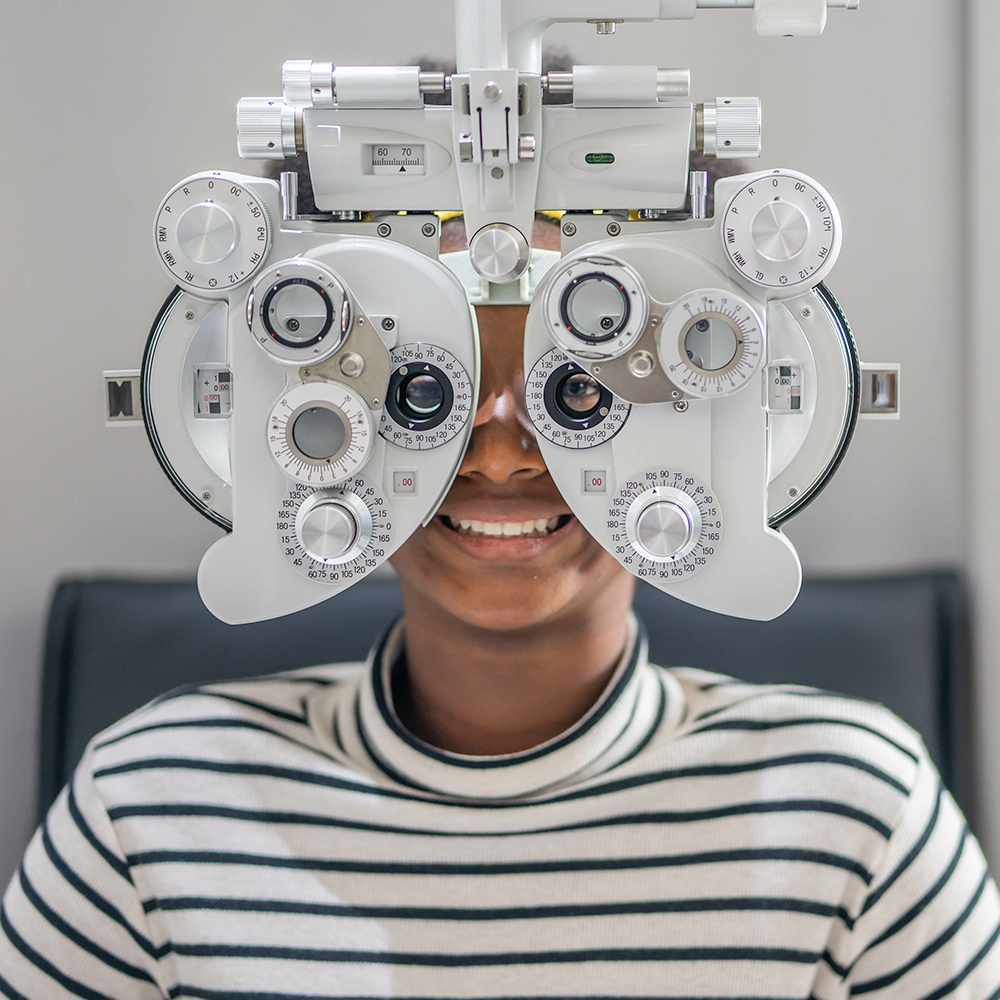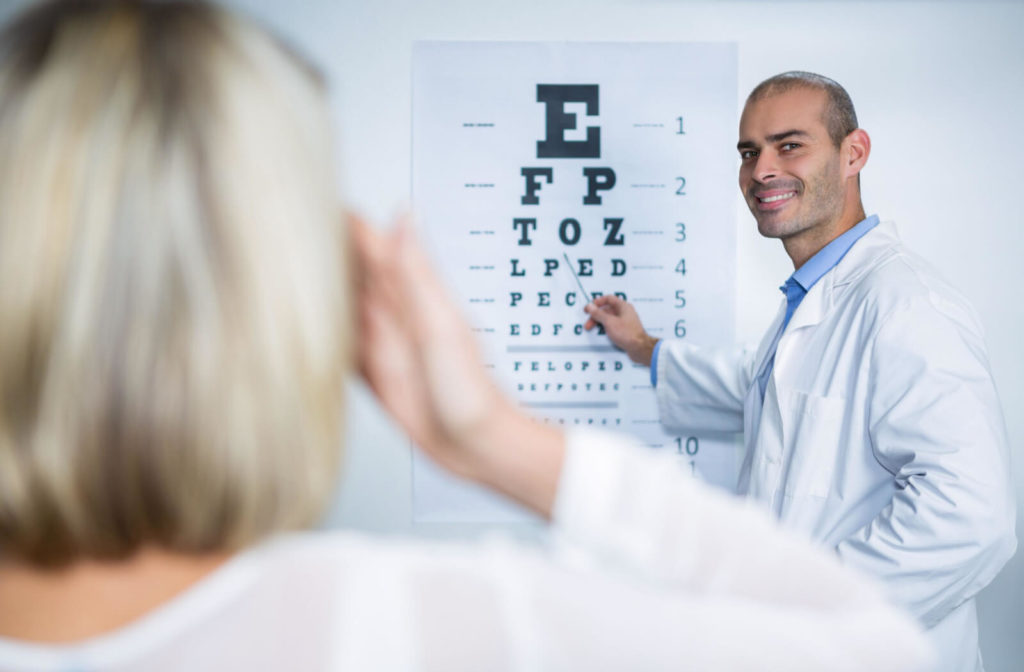How an Eye Doctor Can Change Your Vision Health in Chino
How an Eye Doctor Can Change Your Vision Health in Chino
Blog Article
Checking Out the most recent Technological Improvements in Optometry and What They Mean for Eye Doctors
In the ever-evolving area of optometry, recent technological innovations are improving how professionals approach eye care. From the precision of Optical Comprehensibility Tomography to the nuanced understandings offered by AI-driven diagnostic devices, these technologies are setting new requirements in person analysis and therapy. Teleoptometry is poised to redefine ease of access, making certain that competence transcends geographical constraints. As these developments penetrate the technique, optometrists are encountered with the difficulty of accepting these tools to enhance patient outcomes. Yet, the inquiry stays: just how will these technological changes redefine the duties and duties within the occupation?
Developments in Diagnostic Equipment
Progressing the field of optometry, technologies in analysis tools have revolutionized the way eye treatment experts analyze and diagnose visual problems and ocular conditions. The previous years has actually witnessed considerable technological improvements, enabling more exact and thorough examinations. Optical Comprehensibility Tomography (OCT), for instance, gives high-resolution cross-sectional images of the retina, permitting the early detection of diseases such as glaucoma and age-related macular degeneration. This non-invasive imaging method has actually become vital in modern optometric practice.
One more key technology is the intro of advanced corneal topography systems, which map the surface curvature of the cornea with accuracy. These devices are especially advantageous for suitable call lenses and identifying corneal problems. Electronic retinal imaging has changed standard ophthalmoscopy, offering thorough, breathtaking views of the retina that help with comprehensive visual exams.
The development of wavefront aberrometry has actually likewise been vital, making it possible for the analysis of refractive mistakes with unmatched accuracy (Eye Doctor). This technology helps in personalizing corrective lenses and enhancing medical results for refractive surgeries. Jointly, these analysis improvements encourage optometrists to deliver exceptional individual care, making certain very early intervention and tailored therapy approaches, ultimately enhancing visual health outcomes
AI in Patient Administration
Building on the structure of advanced diagnostic devices, the unification of synthetic knowledge (AI) in client monitoring stands for a transformative leap for optometry. AI systems are increasingly utilized to boost efficiency, precision, and personalization in person care.
Furthermore, AI-driven platforms assist in structured client communications and administrative procedures. Automated scheduling, online consultations, and individualized follow-up plans not only boost patient complete satisfaction yet likewise optimize time monitoring for professionals. These systems can triage people based on the necessity of their conditions, making certain that those in essential need obtain timely interest.
In addition, AI enhances decision-making by supplying eye doctors with evidence-based referrals and therapy paths. By incorporating data from digital wellness records, AI devices offer understandings that educate professional choices, lowering the risk of errors and enhancing client results. As AI continues to develop, its duty in person administration will likely increase, reshaping the landscape of optometric care.
Breakthroughs in Retinal Imaging
In the realm of optometry, retinal imaging has observed remarkable technical improvements that are enhancing analysis capabilities and individual treatment. Innovations such as Optical Coherence Tomography (OCT) and fundus photography have actually transformed how eye doctors picture and evaluate the retina.
Improved imaging techniques like OCT angiography are further refining diagnostic precision. This non-invasive method maps blood flow in the retina, offering crucial insights right into vascular health and wellness without the demand for color shots. In addition, flexible optics technology is being incorporated right into retinal imaging systems to remedy ocular aberrations, delivering extraordinary picture clearness. Such innovations facilitate the recognition of minute retinal modifications that can symbolize disease progression.
Additionally, developments in artificial intelligence are increasing retinal imaging by enabling automatic analysis of large datasets. These systems help eye doctors in determining patterns a sign of pathology, therefore enhancing diagnostic precision and effectiveness. Collectively, these advancements are changing retinal imaging into a cornerstone of contemporary eye care, improving outcomes and expanding healing possibilities.
Teleoptometry's Growing Role
Teleoptometry is significantly coming to be an important our website part of eye care, driven by advancements in digital communication and diagnostic tools. This is particularly useful in country and underserved locations where access to specialized eye treatment is typically restricted.
The assimilation of synthetic intelligence (AI) further boosts teleoptometry, making it possible for the analysis of visual data and helping in the detection of eye conditions such as glaucoma and diabetic retinopathy. AI-powered formulas can quickly translate intricate imaging data, providing optometrists with useful understandings that strengthen medical decision-making.
Additionally, teleoptometry supports continuity of treatment through smooth combination with electronic health documents (EHRs), enabling eye doctors to keep comprehensive individual histories. This ensures that people obtain individualized and constant care even when seeking advice from with various professionals.
Despite these benefits, obstacles remain, including making sure data safety and handling patient assumptions. However, teleoptometry represents a considerable stride in the direction of more accessible, efficient, and patient-centered eye care. As technology progresses, its role is poised to expand even more.

Future Patterns in Eye Treatment
A myriad of innovative fads is set to improve the future of eye care, driven by technological developments and the advancing requirements of patients. One substantial pattern is the combination of expert system (AI) in diagnostics, which promises to enhance the accuracy and effectiveness of eye assessments. AI formulas can analyze substantial quantities of information from retinal images, possibly detecting problems like diabetic retinopathy and glaucoma earlier than conventional methods.
Furthermore, customized medicine is gaining traction in optometry, with hereditary screening educating personalized therapy plans. This technique intends to maximize patient results by tailoring interventions to individual genetic profiles. Wearable modern technology, such as wise call lenses, is likewise coming up, supplying real-time tracking of intraocular stress or glucose degrees, therefore supplying constant insights right into systemic and ocular health and wellness.
The fostering of increased truth (AR) visit this site right here and virtual reality (VR) in training and person education is another arising fad. These innovations use immersive experiences that can boost understanding and abilities both for clients and eye doctors. As these trends progress, eye doctors should special info stay abreast of technical developments to provide innovative treatment, making sure enhanced client results and contentment in the vibrant landscape of eye care.
Final Thought

Collectively, these diagnostic innovations equip optometrists to supply remarkable individual care, making sure early intervention and customized therapy methods, inevitably improving visual wellness results.

As these innovations continue to develop, optometrists have to adapt and integrate them right into practice, inevitably maximizing operations performance and elevating the criterion of eye care delivered to clients.
Report this page